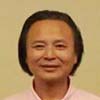Capital Music of Zhihua Temple


Chinese Buddhist music of Zhihua Temple is the predominant type of Buddhist ritual music performed at temples in the capital city of Beijing. Music of more than twenty temples in the Beijing area is known as “Capital music from the Zhihua Temple,” Zhihuasi Jing yinyue 智化寺京音乐.
Zhihua Temple is at the east end of a small lane Lumicang Hutong, about equidistant from the former Chaoyang and Jianguo city gates. Founded in 1444 by Wang Zhen, who was Ming emperor Yingzong’s favored eunuch and supervisor of the Office of Rites, Zhihua Temple was built as his family temple. In 1961, it was among the first group of cultural sites throughout China that the State Council declared key cultural relics under protection of the nation, and it is now the best-preserved Ming-era timber architecture complex in Beijing.
Benefiting from Wang Zhen’s unprecedented power at the court, the temple was able to hire skilled monk musicians to play during Buddhist ceremonies and other ritual activities for the members of the court. However, with Wang’s death in 1449, the temple lost its prestigious status, and during Emperor Jingdi’s reign (1450-1456), the monks began to perform ritual music outside the temple to make a living. Thus Capital music of Zhihua Temple also became popular among the people. When Emperor Yingzong retook the throne in 1457, he at once set out to honor Wang Zhen with statues and steles and rituals performed at the temple. The music of Zhihua Temple gradually increased in importance.
The comprehensive instrumental ensemble, rigorous training, and elegant performance style of the Zhihua Temple’s music group inspired other temples in Beijing through the succeeding Qing dynasty. During the reign of Emperors Daoguang and Xianfeng (1821-1861), Zhihua Temple became such a center for Beijing music that spread to numerous temples in the region including but not limited to: Tianxian Nunnery, Chengshou Temple, Shuiyue Nunnery, Dizang Temple, Xizhao Temple, Guandi Temple, Huoshen Temple, Jiuding Niangniang Temple, and Puning Temple.
Compared with the more folk-style Buddhist music popular in the western Xicheng and Haidian districts of Beijing, monks considered the court-originated music of the Zhihua Temple, and later popularized in the eastern Dongcheng and southern Nancheng districts to be more classic and graceful. The former was thus termed “rustic music” (qie yinyue) as opposed to the capital music. In terms of instruments, rustic music uses the large-piped wind instruments more often than the smaller ones featured in Capital music. As for music structure, rustic music consists of more single compositions (zhiqu) with less formal organization into extended suites (taoqu). Music of Zhihua Temple is further distinguished by having four keys and in being recorded in surviving musical notation from the seventeenth century. Therefore, monk musicians of the Zhihua Temple named their music “Capital (Jing) music” as the established high form of temple music.
Jing ceremonial music consists of three parts: vocalization of text, wind instruments, and percussion instruments, called by monk musicians the “three gateways.” The most prominent of these is the musical gateway of the wind instruments that greatly distinguished capital music of Zhihua Temple from other temple music or folk music performance.
The Jing music ensemble of the Zhihua Temple is composed of nine performers and thirteen or fourteen musical instruments, including two pipes, two flutes, two sheng, two sets of cloud chimes, one drum, a set of small cymbals, 2 mounted gongs, two larger cymbals (nao and bo) and a bell. Several members of the troupe will play more than one instrument during a performance.
There are two types of models (qupai 曲牌) for Jing music from the Zhihua Temple: single piece compositions and suites. The suite has a fixed structure, generally consisting of prelude, main body, and tail or coda. The extended suite may be performed for specific services: Zhongtang qu is played during the day ritual for Precious Penitence of the Avatamsaka Sutra, and Liao qiao is played during the Yogacara Offering Service at night.
Jing music of Zhihua Temple has a solemn, classic style, with rigorous structure, and it is performed by extensively trained monk musicians. Hundreds of historical compositions are known, some representative works bearing titles referring to historic songs and poetic themes going back centuries—including autumn wind, clear streams, plum blossoms, and golden mountains. It is the only historic music in China that has been passed down from one generation of musicians to another in an uninterrupted manner for 27 generations. Capital music of Zhihua Temple is a living tradition with great value for historical research.
During the 1950s, musical scholars Zha Fuxi, Yang Yinliu, and colleagues first conducted multiple interviews and recordings of Jing music from Zhihua Temple. This generated many insights and research perspectives that had a far-reaching and fundamental impact. In 2005, Zhihua Temple’s Jing music was declared an intangible cultural heritage by the State Council.